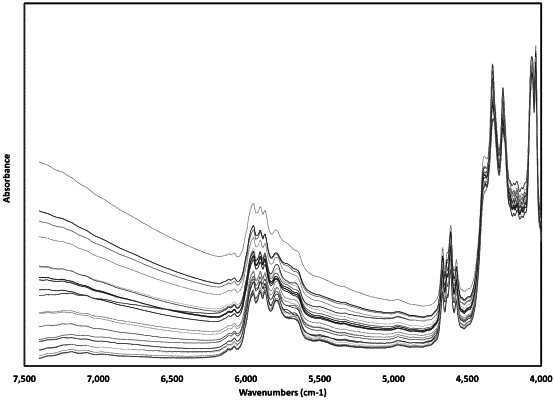| CPC G16C 20/30 (2019.02) [G01N 21/3577 (2013.01); G01N 21/359 (2013.01); G01N 31/16 (2013.01); G01N 33/2823 (2013.01)] | 19 Claims |

|
1. A method of predicting a blend compatibility in a system between a first oil composition A and a second oil composition B, wherein the method comprises:
obtaining a correlation between near infrared spectroscopic information, asphaltene solubility parameter Ra, and maltene solubility parameter Po for a set of samples using multivariable analysis;
obtain a near infrared spectra on the first oil composition A and use the correlation to obtain the first oil composition A's Ra and Po;
obtain a near infrared spectra on the second oil composition B and use the correlation to obtain the second oil composition B's Ra and Po;
determine the Ra of the blend of the first oil composition A and the second oil composition B using the equation Ra(blend)=mA RaA+mB RaB and determine the Po of the blend of the first oil composition A and the second oil composition B using the equation Po(blend)=mA PoA+mB PoB, wherein mA, mB are the % mass of crude oils A and B, while PoA, RaA, PoB and RaB are the parameters of the crude oils A and B that form the blend;
predict the blend compatibility using the equation P=Po(blend)/Ra(blend) wherein a P≥1 indicates the blend is compatible.
|